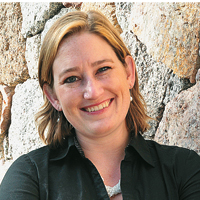When I became the executive director of the Colorado Chapter of the National Hemophilia Foundation (NHF) in December 2010, it was clear that our membership needed improved connection to our chapter, to our state’s hemophilia treatment center and with one another. Our members wanted community, and I wanted to deliver—fast. (See “Digital Connections.”)
I had limited member contact information, but I knew we could use the Internet to create dynamic interactions with our members. As a social media consultant, I have seen the power of social media in engaging people with minimal cost. So, I conducted an assessment of our existing social networks and Web site. Then I created a plan and policies that would encourage community involvement. I created internal and external social media policies to help manage the content that could be posted. Such policies act as insurance that any organization using social media should have in place.
Our chapter already had a Facebook page with about 100 followers, but with limited activity. We created a Twitter account and started a weekly blog, which now serves as our central source for sharing content and inviting participation. The blog provides our community with an inside look into the chapter. To encourage participation, every post ends with a question asking for reader feedback. When possible, incentives, such as free meeting or event registration, are a great way to increase blog participation. Since implementing a social media plan and policies, we have nearly doubled our Facebook fans, increased our Twitter following by 150%, and dramatically increased our Web site traffic.
I encourage chapters looking to create or improve their social media plan to first listen and learn from your stakeholders. Share resources beyond your organization; don’t just tweet or post about your organization or focus only on asking for money. Demonstrate the impact of donations and volunteer time through stories featuring community members. Be prepared for and open to dissent when it occurs.
Social media is only one tool in our toolbox when serving the bleeding disorders community; it is not the tool. Using social media in combination with other strategies will help your chapter increase participation, develop trust between you and your community, and eventually raise funds.
 Emily Davis is the executive director of the Colorado Chapter of NHF. She has a master’s degree in nonprofit management (MNM) from Regis University in Denver.
Emily Davis is the executive director of the Colorado Chapter of NHF. She has a master’s degree in nonprofit management (MNM) from Regis University in Denver.

